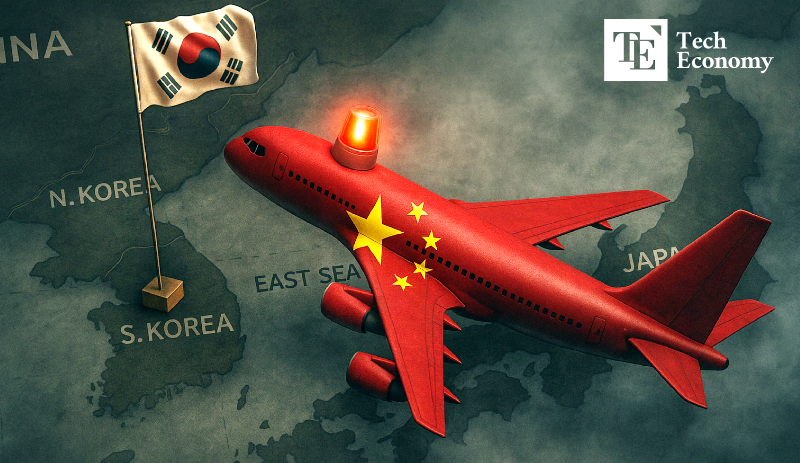Chinese Appliances Shed ‘Low-Cost’ Image, Mount Offensive on Samsung and LG in the Premium Market
Input
Modified
Chinese Manufacturers Formalize Entry into Korean Appliance Market Expansion into Premium Segment Fuels All-Out Offensive Value-for-Money and Customization Strategies Target Consumer Demand

Chinese appliance makers are moving aggressively into South Korea, targeting the country’s premium home appliance segment long dominated by Samsung Electronics and LG Electronics. Armed with cost-efficiency and tailored product strategies, they are rapidly broadening their footprint across categories such as robotic vacuum cleaners, washer-dryers, and televisions, while simultaneously consolidating their hold on the mid-to-low-end market through private label (PB) products of local distributors. The intensifying offensive is prompting Korean incumbents to scramble for countermeasures.
Dreame and Mova Declare Foray into Premium Market
According to industry sources on the 25th, Chinese robotic vacuum brands are formalizing their entry into the Korean premium appliance market. Dreame, founded in 2015, officially announced its push into Korea’s large and kitchen appliance segment during a product launch on the 22nd. The company declared ambitions to evolve into a “lifestyle ecosystem brand,” expanding beyond its flagship robotic vacuums into food waste disposers, wet-and-dry cleaners, and hairdryers, with broader integration into the Internet of Things (IoT).
Mova, spun off from Dreame in 2023, announced its own Korea launch a day earlier, pledging to introduce robotic vacuums, air fryers, electric toothbrushes, pet feeders, and hairdryers to target Korean consumers. Xiaomi has already gained a foothold with television products and is preparing to roll out large appliances such as washers, refrigerators, and air conditioners. TCL and Hisense are pressing into the domestic TV market via local retail networks, while Haier, having established direct operations, is expanding its lineup with white goods.

Chinese Appliances at Half the Price of Domestic Products
A central plank of Chinese brands’ Korean strategy is value-for-money pricing. Roborock’s all-in-one washer-dryer models H1 and M1, for instance, sacrifice capacity in exchange for price points set at roughly half the level of comparable Samsung and LG units. In televisions, Xiaomi and TCL have launched smart TVs priced in the $700–$800 range, more than 50% cheaper than Korean counterparts of equivalent size.
Personalization has also proven effective. Identifying consumers’ desire to reduce household burdens, Chinese manufacturers were quick to embrace the “all-in-one” model. Robotic vacuums, capable of both suction and mopping, have become a notable success despite price tags reaching $1,500–$1,600. Compact appliances targeting single-person households have also gained traction: Midea and Ecovacs rolled out hybrid robot vacuum–air purifiers, while Midea attracted attention with a premium home water purifier.
Chinese players are also reinforcing their dominance in the mid-to-low-end market via Korean distributors’ PB products, luring consumers with shockingly low prices. Coupang’s “Homeplanet” 22-inch Full HD gaming monitor sells for just $60, Hi-Mart’s 245-liter single refrigerator at $220, and E-Mart’s “Electroman” 65-inch smart TV at $450—all less than half the cost of similar Samsung and LG offerings.
Samsung Pushes Subscriptions, LG Pursues Chinese Partnerships
Behind China’s swift penetration lies bold investment and accelerated R&D typical of late entrants with little to lose. While Samsung and LG have taken cautious approaches to protect their premium brand image, Chinese firms have released products aggressively, consolidating technological competitiveness. Lower labor costs and more flexible working environments have further bolstered efficiency.
A vast domestic market has underpinned growth. As of 2023, Midea and Haier outpaced Samsung and LG in sales within China, ranking first and second, respectively. These firms have also expanded global recognition through mergers and acquisitions, with Haier acquiring GE’s appliance unit and Italian built-in brand Candy. Their advances extended to Japan, where they helped drive Panasonic’s exit from the television business after seven decades.
For Korean giants, the calculus is shifting. Samsung is turning to subscription-based sales of premium appliances to lower the entry barrier for consumers. The strategy has already borne fruit: more than half of OLED and Neo QLED TV sales in March were through subscription models. LG, meanwhile, is adopting a dual-track strategy—refining its premium positioning while leveraging Chinese partners for mid-range products. In July, LG announced joint development deals with Skyworth for drum washers and with Okuma for refrigerators, to be released in Europe under the LG brand but manufactured by Chinese partners through a Joint Development Manufacturing (JDM) model—a first for the company.





















